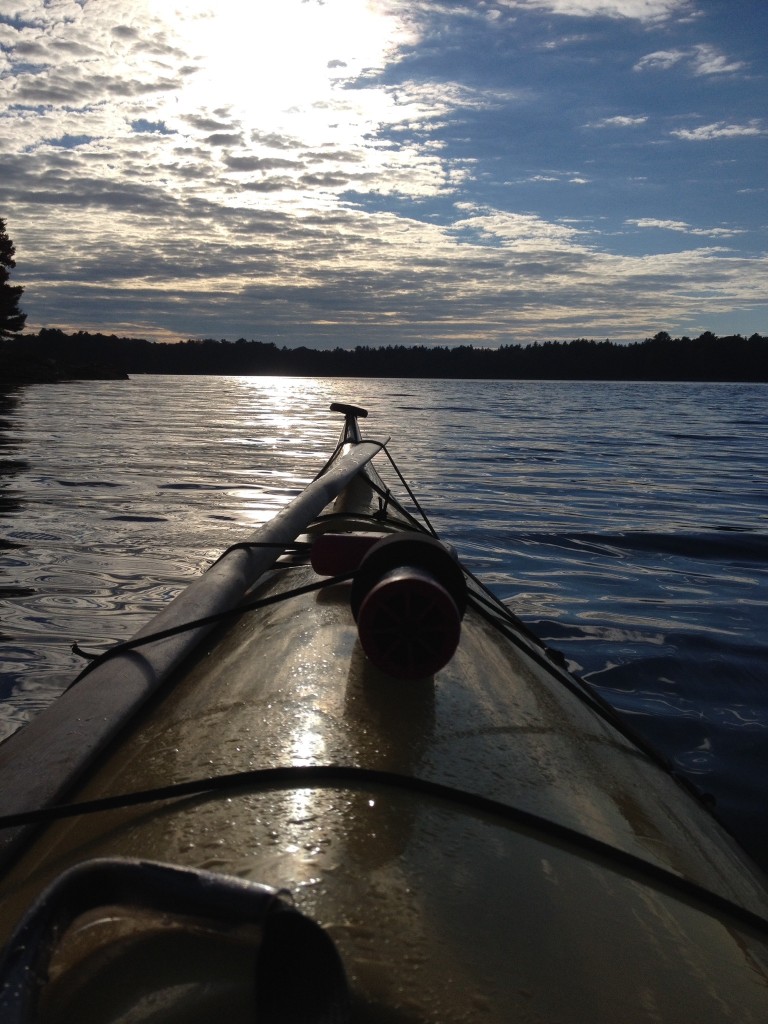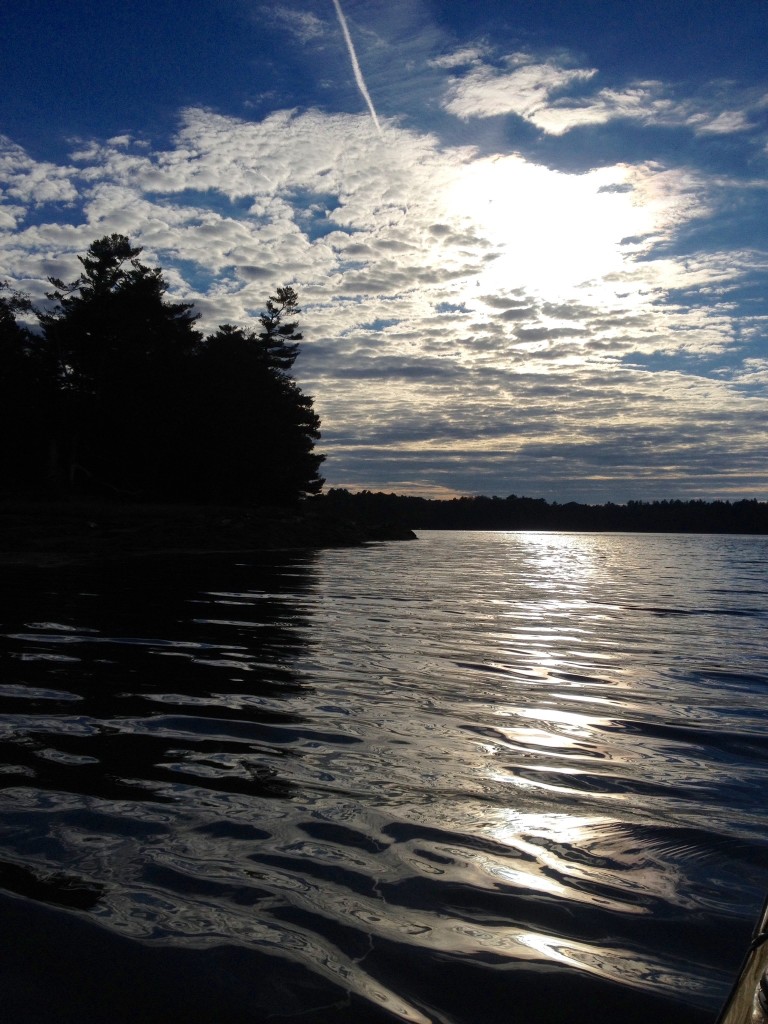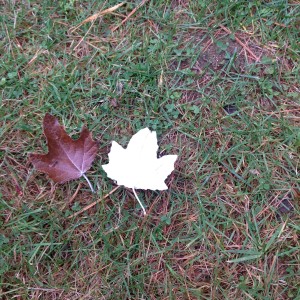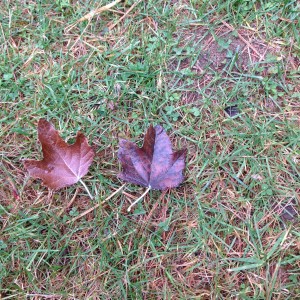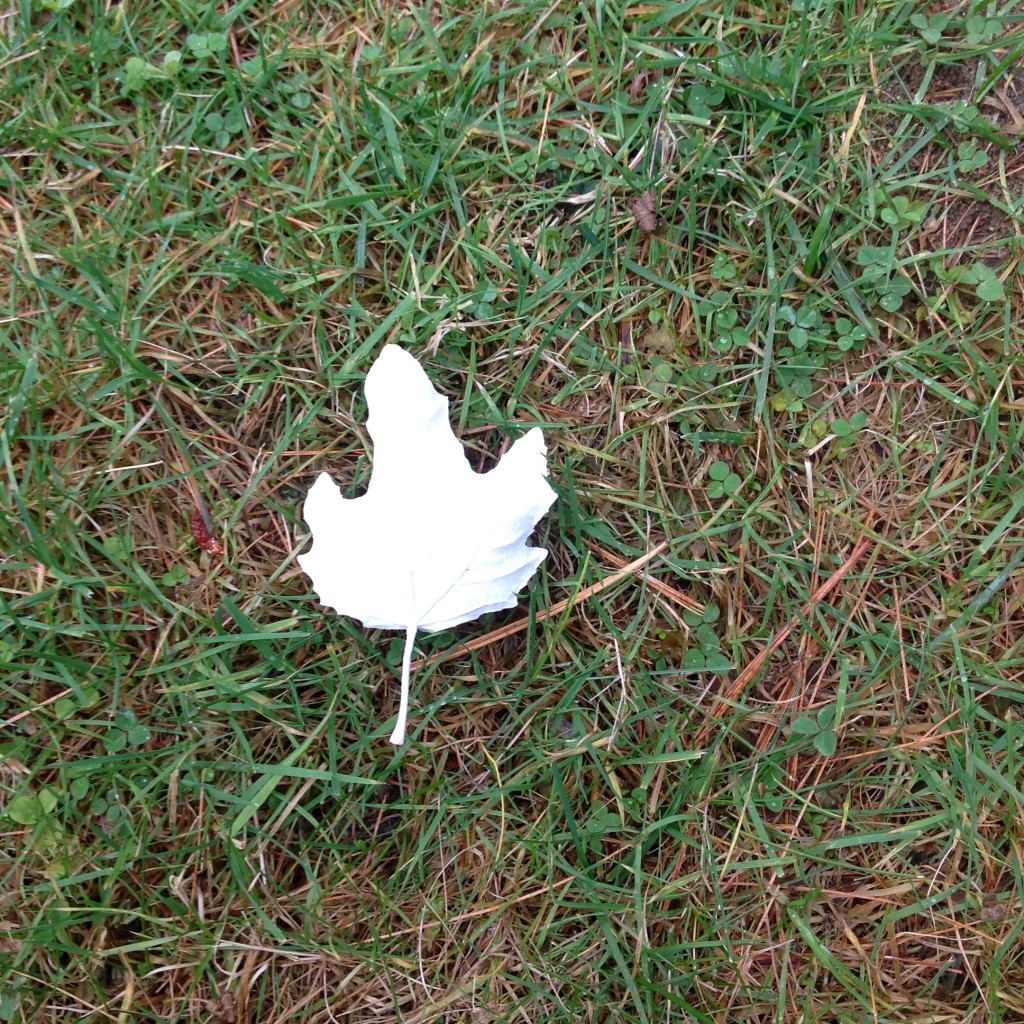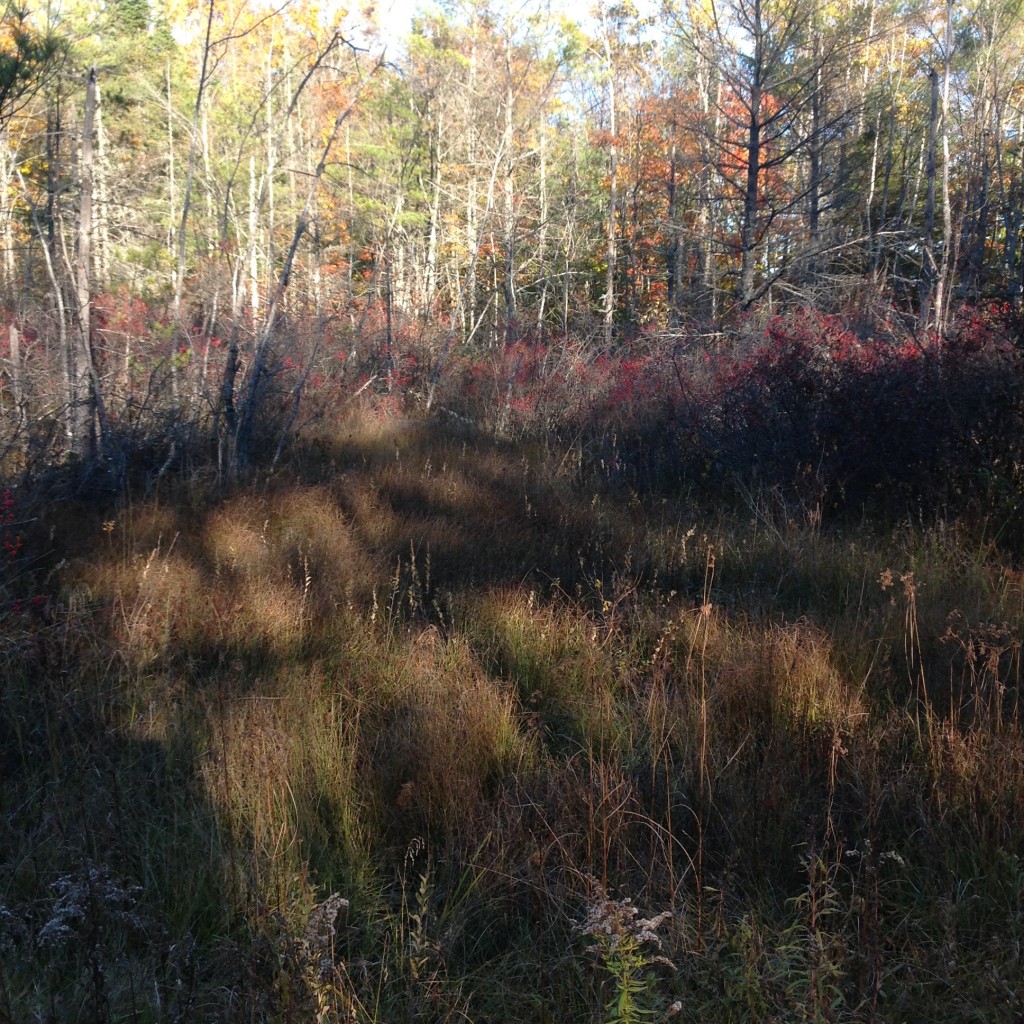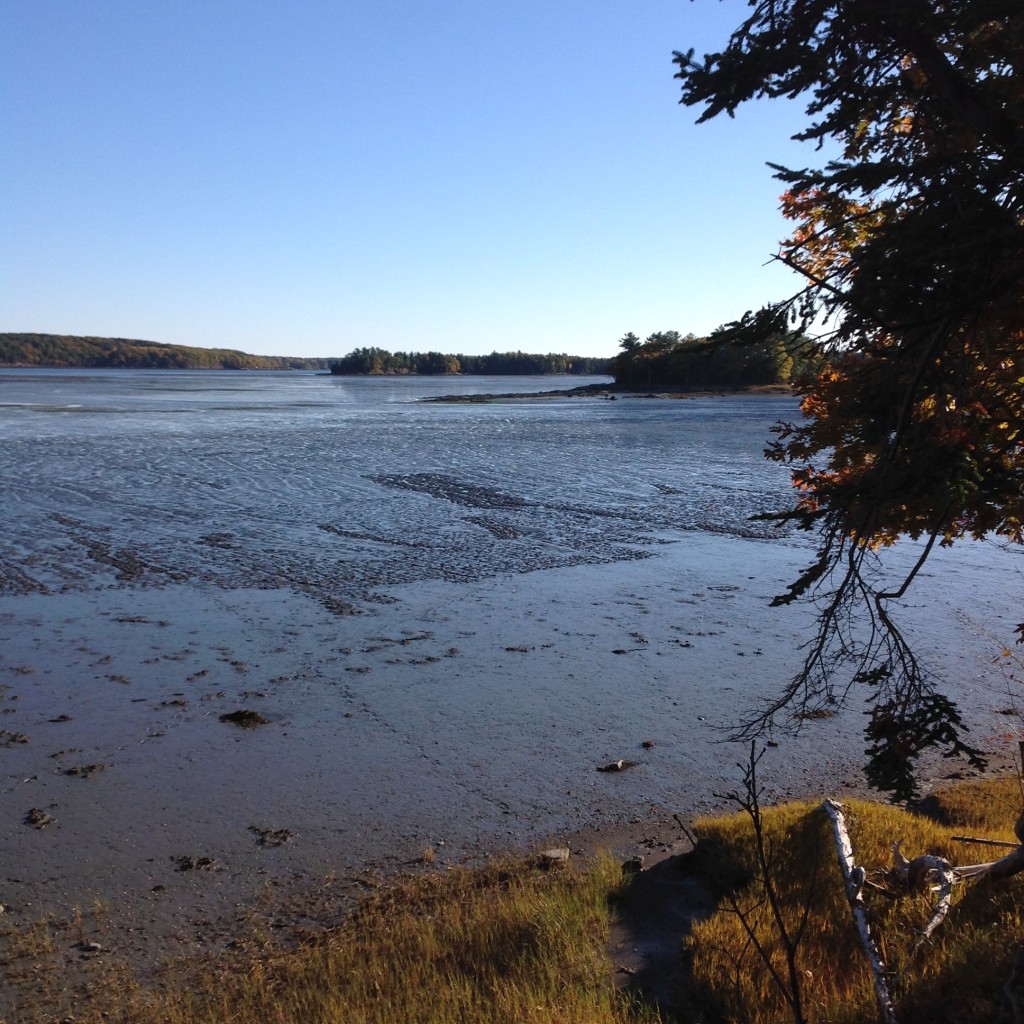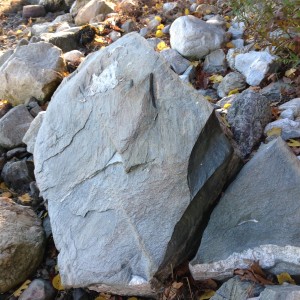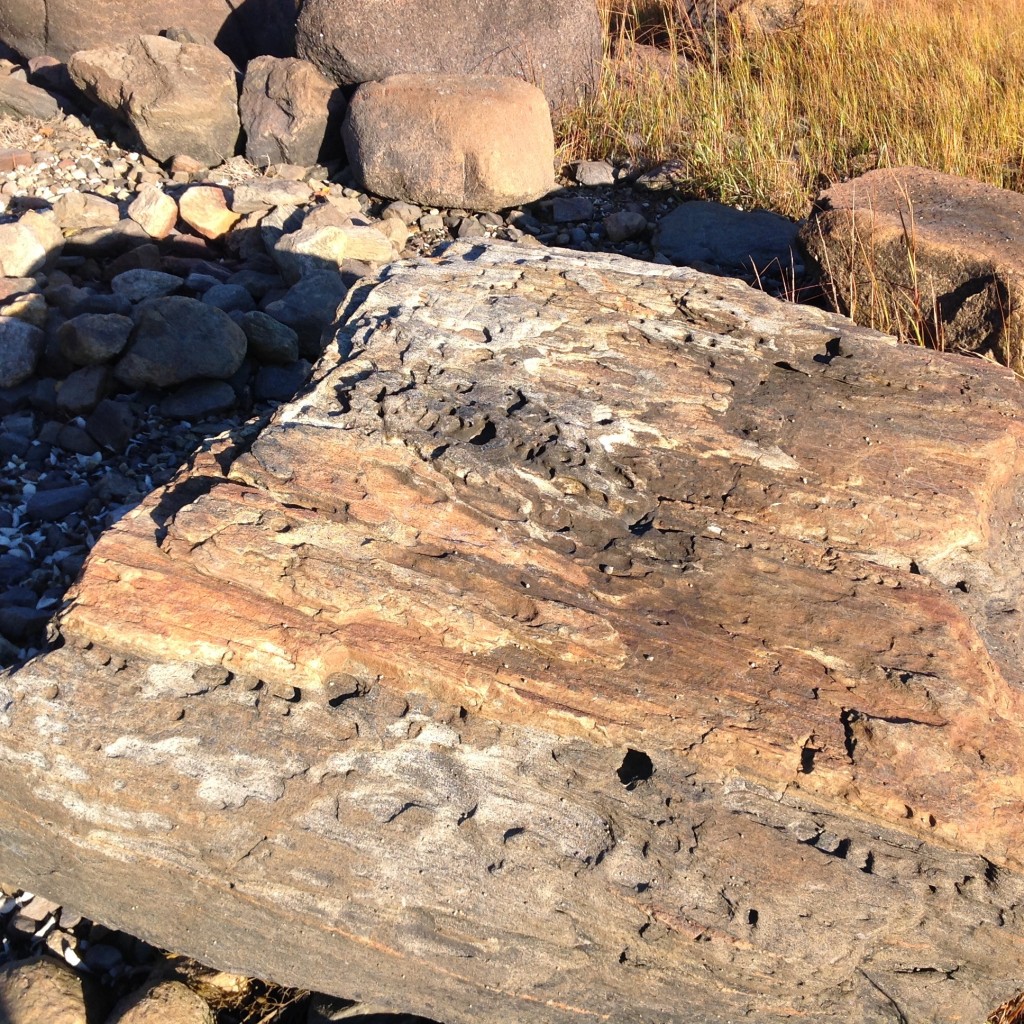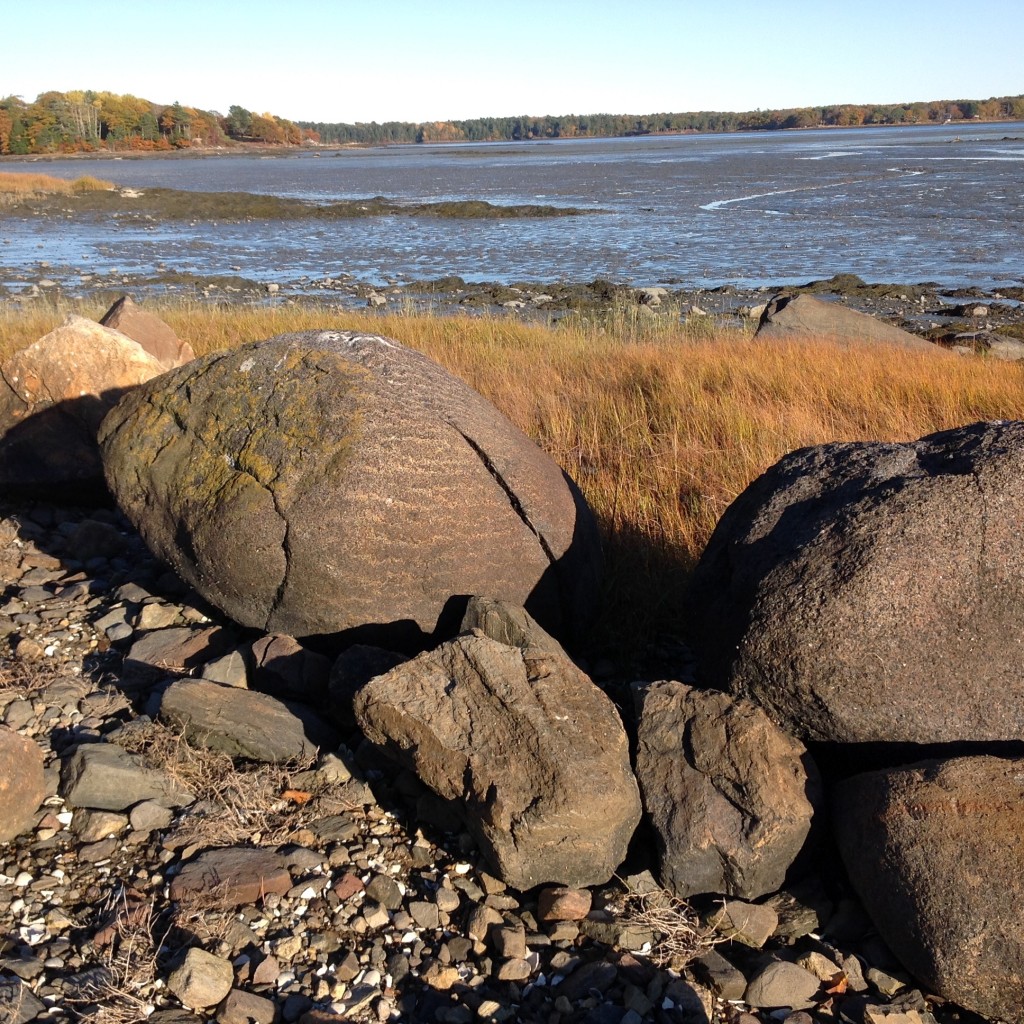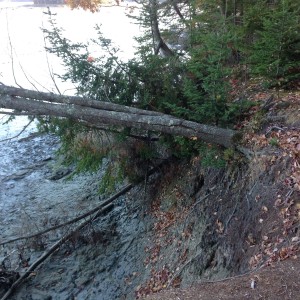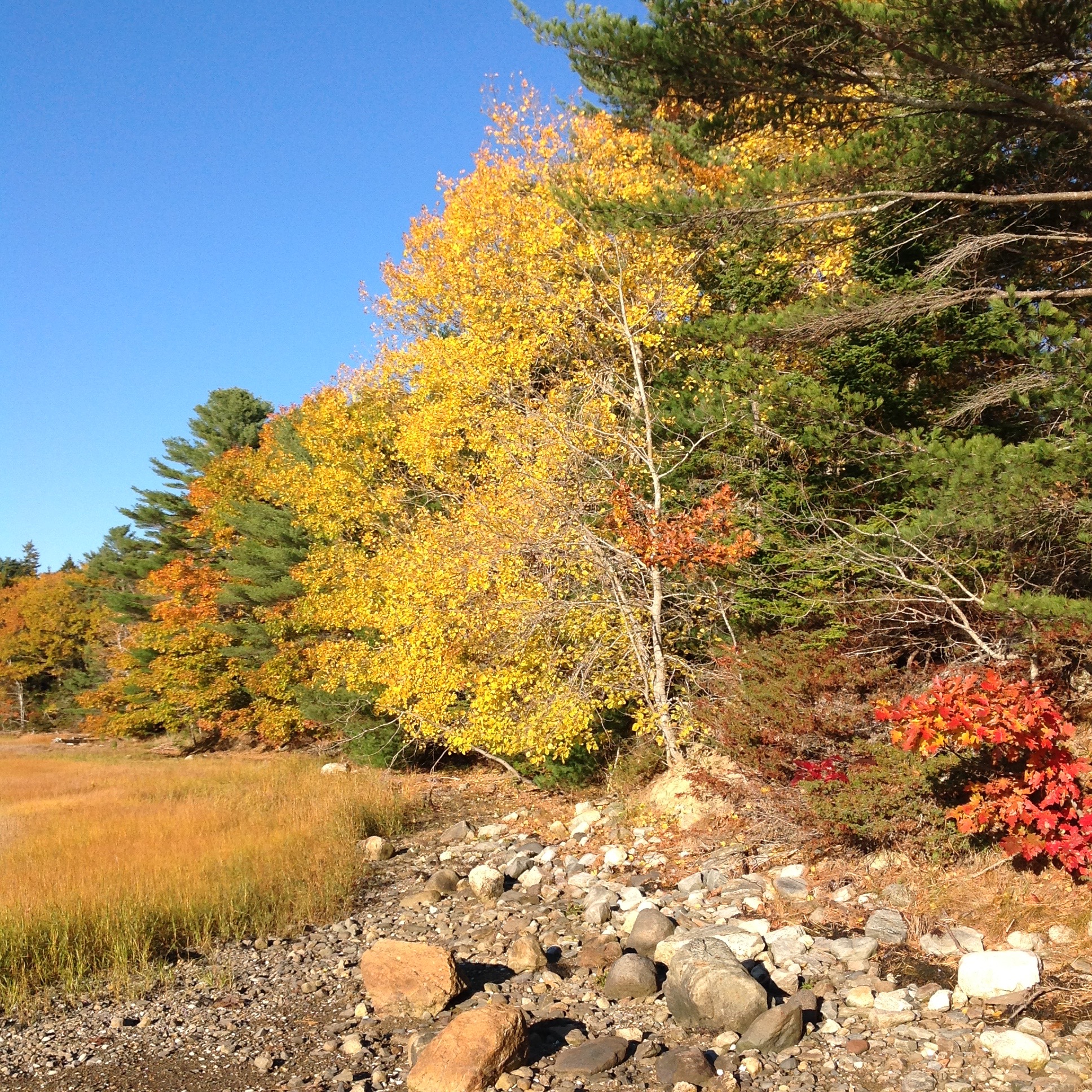This is a very beautiful November day, — a cool but clear, crystalline air, through which even the white pines with their silvery sheen are an affecting sight. It is a day to behold and ramble over the hard (stiffening) and withered surface of the tawny earth. Thoreau, Journal 11/22/60
I awoke today to the first froth of snow rimming the yard. It was gone in the time it took to drink my coffee. But it serves as announcement. Still, the season shifts a little more slowly on the nearby ocean, and not long ago I was on it in search of slowed motion. Being near the ocean as the year ebbs (or floods) gives you access to two seasons, the foot-stepping one of the land and the slow follower of the water.
For the most part, the water-season’s over. Boats are shrink-wrapped and tucked away in storage; only the wind-flung leaves animate the waves as they reach for the shore; and all the osprey and eagle nests that sowed the air with birds are empty. Still, on a day when the winds stay away, and after the slanting sun warms the air a little, I sometimes rack my boat on the car’s roof and go to the sea.
To be clear, as the waters cool, I am wary. The ocean buoys are flirting with 50, and even in the calm bays the temps aren’t much higher. A bath in that sort of water can quickly become a one-way plunge. But I have a drysuit, which makes me feel a little like an astronaut – sans the helmet and Houston – and I’m not about to embark on a “test-piece” of paddling toward some extreme, so some float-time seems okay.
On this day, even in the afternoon, the sea-world seems to have exhaled and dropped into a nap. What ripples there are on the waters emphasize their calm and the tranquil sky above. Paddling on such a surface has the feel of sliding across polished glass, and I begin my circuit of little islands by making the day’s long letter – the V of passage.
As the point of this V I aim at little Scrag Island, and its northern headland, a cliff that looks like a big ship’s prow. There, I drift for bit, watching the silent rock, admiring how the fifty-foot pines somehow find holds that keep them upright and growing an annual foot or so. The absence of any “quick-life,” – birds, boats, us – keeps me at this scene where pine clasps rock; I feel no hurry. When I do paddle on, the shore sliding by on my left, it is simply for the pleasure of this easy sliding.
There is, I think, no large message from this day, other than its glimpse into the longer spans of time where tree and rock simply persist. But there is the expanse of water and sky, the stretch of vision that seems, as I float, back on time’s tide.
Though you are finger-cold toward night, and you cast a stone on your first ice, and see the unmelted crystals under every bank, it is glorious November weather, and only the November fruits are out. Thoreau, Journal, 11/22/60
Today is one of those fruits.

